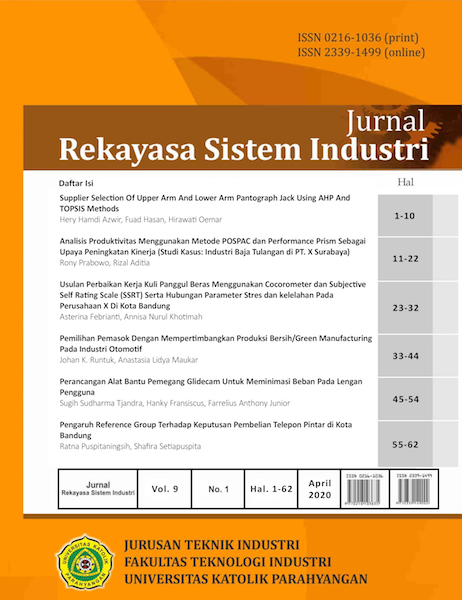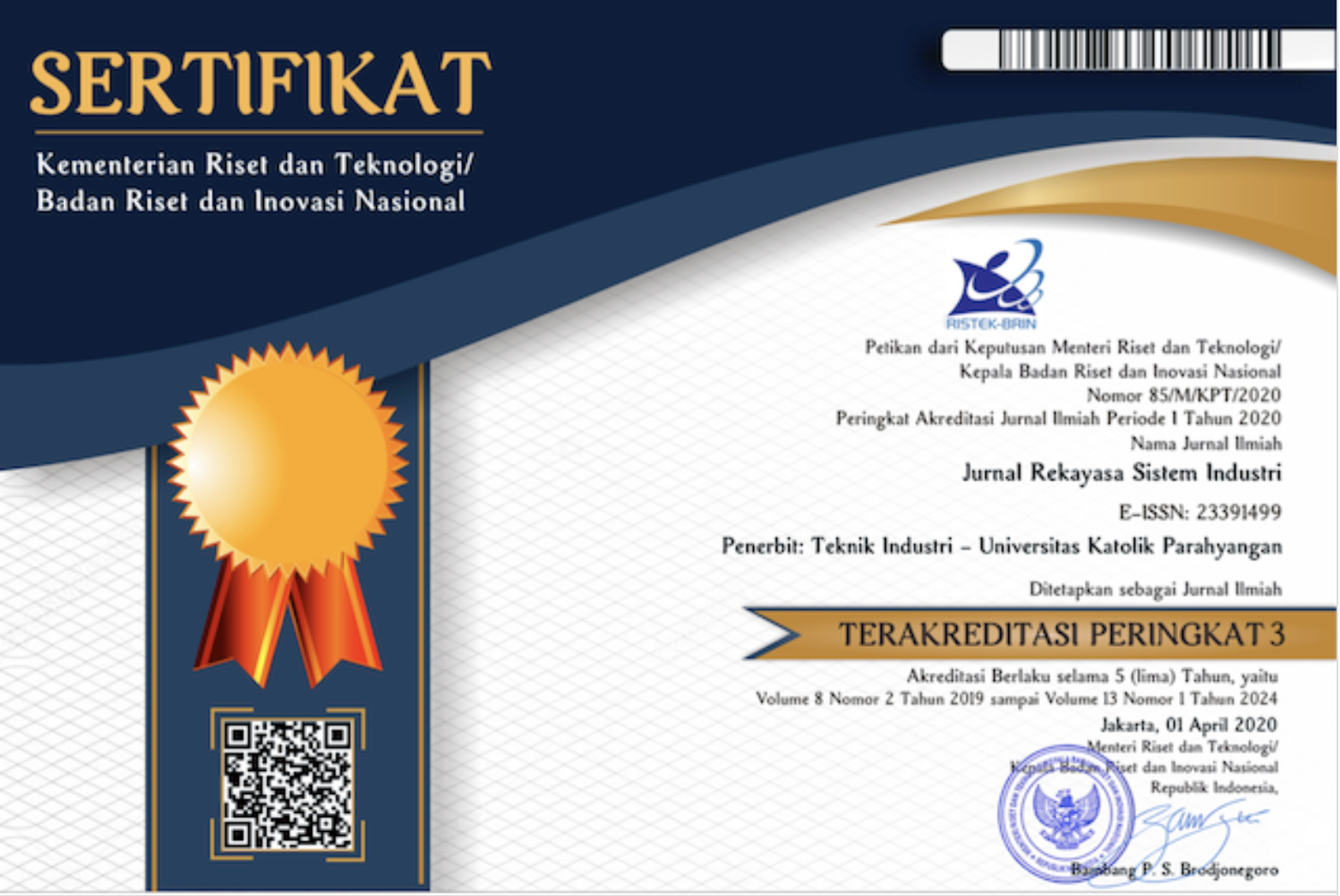Perancangan Alat Bantu Pemegang Glidecam Untuk Meminimasi Beban Pada Lengan Pengguna
DOI:
https://doi.org/10.26593/jrsi.v9i1.3618.45-54Abstrak
One of the tools used by cameramen to help stabilize while recording is Glidecam. Glidecam works based on the use of additional weights to compensate the load from the camera. However, there are still weaknesses in the use of Glidecam, including the fatigue and aches felt by the cameraman after Glidecam's use. In addition, it may cause disruption to joint, ligament, muscle, nerve and tendon function, and spine, for continuous Glidecam use. One alternative tool to overcome this problem is the use of Arm Brace. Arm Brace in the form of a passive exoskeleton that will compensate for part of the load from Glidecam. The product design process includes creating mission statements, identifying customer needs, determining product specifications, developing concepts, selecting concepts, making prototypes and evaluating prototypes. In this study two prototypes were made and evaluation with statistical tests showed that there was a significant increase in the endurance time of using Glidecam on the use of the two prototypes compared to that without the tools. The selection of the final prototype is done with a qualitative evaluation from the user. Qualitative evaluation is carried out with six assessment criteria: ease of use and installation, product mobility, product mass, product robustness, product support and product mechanism.
Keywords: Glidecam, Arm Brace, Eksoskeleton
Referensi
Bienkowski, T. L., Asfour, S. S., Waly, S. M., & Genaidy, A. M. (1986). A Comprehensive Data Base for the Design of Manual Materials Handling. Computers & Industrial Engineering, 11(1-4), 351-354. doi: 10.1016/0360-8352(86)90109-9
Deros, B. M., Daruis, D. D. I., & Basir, I. M. (2015). A Study on Ergonomic Awareness among Workers Performing Manual Material Handling Activities. Procedia – Social and Behavioral Science, 195, 1666-1673. doi: 10.1016/j.sbspro.2015.06.238
Montgomery, D. C. & Runger G. C. (2004). Applied Statistics and Probability for Engineers (3rd edition). New York: John Wiley and Sons, Inc.
Otto, K. N., & Wood, K. L. (2001). Product Design: Techniques in Reverse Engineering and New Product Development. Upper Saddle River: Prentice Hall.
Ulrich, K. T., & Eppinger, S. D. (2012). Product Design and Development (5th edition). New York: McGraw-Hill.













